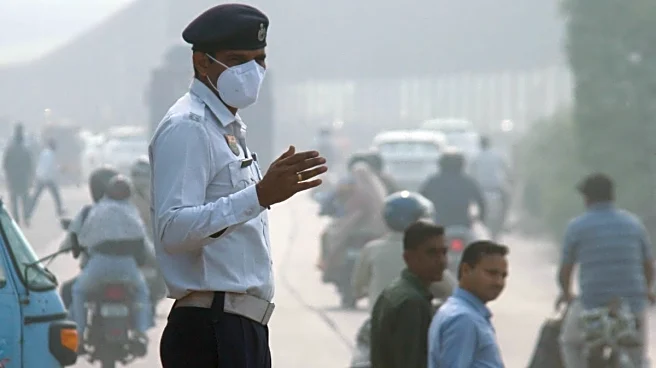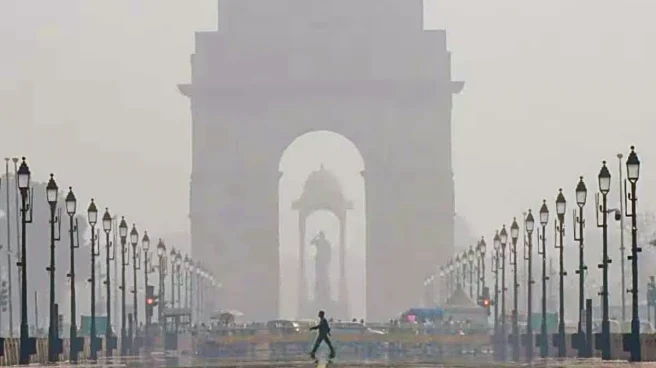
Delhi’s air has crossed a dangerous threshold today, with the AQI registering 481, according to AQI.in — firmly in the “hazardous” category. While often the spotlight is on PM2.5, city officials now say
that PM10 particles are largely to blame for the sharp deterioration in air quality.
What is PM10 and why does it matter?
PM10 refers to a particular matter that has a diameter of 10 micrometers or less. These particles present as a mixutre of both solids and liquidds from sources like construction, emissions, dust and the burning of fossil fuels. While PM10 can be filtered through nose and throat, inhaling them can still cause damage to lungs and heart. In Delhi’s case, PM10 is being released in large amounts from construction sites, unpaved or dusty roads, and traffic congestion, according to Environment Minister Manjinder Singh Sirsa, who noted that 62 “hotspots” across the city are major contributors.The immediate risks to your lungs
When PM10 levels are 'hazardous,' as it is in the case of Delhi NCR right now, they tend to irritate the airways and can also lead to worsening of conditions like asthma and COPD (chronic obstructive pulmonary disease)These particles are known to cause inflammation in the lungs and lead to mucus production, making it harder to breathe. According to medical experts, people who are usually otherwise healthy may also experience coughing, shortness of breath and chest tightness when exposed to polluted air.Growing threat to the heart
PM10 doesn’t just target the lungs — it’s also linked to cardiovascular stress. Long-term exposure to such particles can cause an increase in sytemic inflammation. This weakens blood vessels and heightens the risk of heart attacks, stroke and hypertension. Studies have also suggested that the polluted air in Delhi has contributed to a major spike in heart-related illnesses, especially those among older adults and people with pre-existing conditions.Who’s most vulnerable?
- Children and infants: Their lungs are still developing, and they breathe more air per body weight.
- Elderly people: With weaker immune systems and often existing health issues, they are more likely to suffer.
- Those with lung or heart disease: Asthmatics, COPD patients, or anyone with cardiovascular issues face heightened danger.
- Pregnant women: Though less commonly discussed, polluted air may contribute to poor birth outcomes and low birth weight.
What can you do right now?
- Minimise outdoor exposure and avoid any strenuous activity outside, particularly when AQI is in the hazardous zone.
- Wear a proper mask: Use N95 or equivalent masks to filter out larger particles like PM10.
- Use air purifiers if you can afforf one as they help in filtering out PM2.5 and PM10, reducing indoor pollutant levels.
- Seek medical help if you think things are getting worse, or if you are someone with pre-existing heart and/or lung conditions. The early signs can be if you begin to feel wheezing, chest pain, or breathlessness.
/images/ppid_a911dc6a-image-17632636377976101.webp)

/images/ppid_a911dc6a-image-176316844750155582.webp)


/images/ppid_a911dc6a-image-176309282929619156.webp)

/images/ppid_a911dc6a-image-17631362866593563.webp)
/images/ppid_a911dc6a-image-176300043022373995.webp)
/images/ppid_a911dc6a-image-176302023666714693.webp)
/images/ppid_a911dc6a-image-176308162847628222.webp)

/images/ppid_59c68470-image-176301755657187424.webp)
